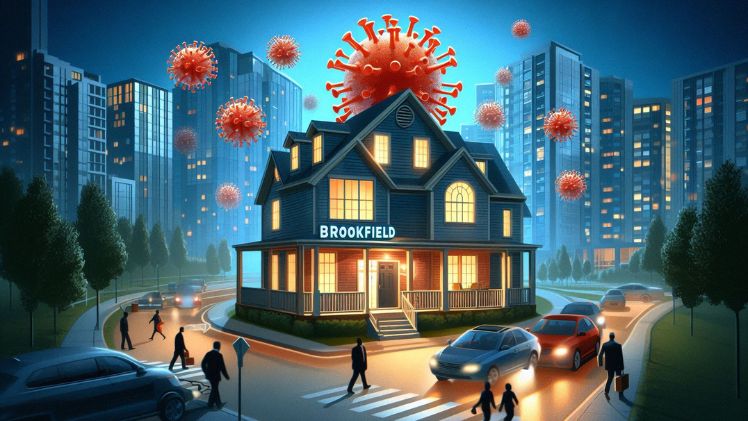Brookfield Residential Coronavirus How the Company Navigated the Crisis

The COVID-19 pandemic impacted every industry, including real estate. Brookfield Residential, a major real estate developer in North America, faced many challenges. The company had to adjust its operations, ensure safety, and respond to changing customer needs. This article explains how Brookfield Residential and the Coronavirus handled the crisis, adapted its strategies, and prepared for the future.
Challenges Faced by Brookfield Residential
When COVID-19 spread globally, many businesses struggled. Brookfield Residential was no exception. The company had to find new ways to sell homes, continue construction, and keep employees safe. Social distancing rules meant fewer in-person meetings and open houses. This was a major challenge in an industry that relies on face-to-face interactions.
Another problem was supply chain disruption. The pandemic slowed down the availability of construction materials. Delays in shipments affected building schedules. This led to project slowdowns and increased costs.
Homebuyers also became hesitant. Uncertainty about jobs and finances made people think twice before making big investments. As a result, the demand for homes changed, with buyers looking for different features in a post-pandemic world.
How Brookfield Residential and the Coronavirus Adapted
Brookfield Residential quickly responded to these challenges. The company shifted to digital platforms to reach potential homebuyers. Virtual tours and online consultations became the new normal.
Instead of visiting homes in person, buyers could now explore properties online. The company used high-quality videos, interactive 3D models, and live virtual showings. This gave customers a similar experience to traditional home tours without physical contact.
Brookfield Residential also made changes to its sales process. Digital contracts and remote closings allowed homebuyers to complete transactions safely. This ensured that business continued despite restrictions.
In construction, the company introduced strict safety protocols. Workers had to wear protective equipment, maintain social distance, and follow hygiene guidelines. Construction sites were regularly sanitized. These steps helped projects move forward while keeping workers safe.
Changing Homebuyer Preferences
COVID-19 changed what homebuyers wanted. With remote work becoming common, people needed more space at home. Many buyers looked for houses with home offices and outdoor areas. Open floor plans were no longer a priority. Instead, people wanted homes with separate rooms for work and study.
Brookfield Residential adjusted its home designs to meet these new demands. The company introduced flexible floor plans, larger living spaces, and improved ventilation systems. Homes with energy-efficient features and smart home technology also became more popular.
There was also a shift in location preferences. Before the pandemic, city living was popular. However, during the crisis, many people moved to suburban areas. Buyers wanted more space, less crowding, and access to parks and nature. Brookfield Residential focused on developing communities in these areas, offering homebuyers better living environments.
Financial Performance and Market Trends
The pandemic initially slowed down the real estate market. Many home sales were postponed or canceled. However, by mid-2020, things started to change. Demand for homes in suburban and rural areas increased. Low interest rates encouraged buyers to invest in property.
Brookfield Residential saw a similar trend. In the second quarter of 2020, the company delivered 634 homes and 164 lots. This was lower than the 763 homes and 756 lots delivered in the same period in 2019. However, by June 2020, new home orders increased by 18%, showing signs of recovery. By July, demand had further improved, driven by changing consumer preferences. (Source)
Safety Measures and Employee Well-Being
Brookfield Residential placed a strong focus on health and safety. The company implemented strict COVID-19 guidelines in offices, sales centers, and construction sites. Some key measures included:
- Mandatory masks and protective gear for workers
- Regular temperature checks and health screenings
- Hand sanitizing stations at all locations
- Limiting the number of visitors in sales centers
- Enhanced cleaning and disinfection procedures
Remote work was encouraged for employees who could work from home. This helped reduce the risk of infection and ensured business continuity.
The Future of Brookfield Residential Post-Pandemic
As the world moves beyond the pandemic, the real estate market continues to evolve. Brookfield Residential is focusing on long-term trends that emerged during the crisis.
One key area is sustainability. More buyers are looking for eco-friendly homes with energy-efficient appliances and smart technology. The company plans to integrate these features into its developments.
Another focus is community living. The pandemic highlighted the importance of having strong neighborhood connections. Brookfield Residential and the Coronavirus is designing communities with shared spaces, parks, and amenities that encourage social interaction while maintaining safety.
Finally, digital tools will remain a part of the homebuying process. Virtual tours and online transactions proved to be effective during the pandemic. The company will continue to use these tools to provide a seamless experience for buyers.
FAQs
- How did Brookfield Residential handle home sales during the pandemic? Brookfield Residential used digital tools such as virtual tours, online consultations, and remote closings. These allowed customers to explore and purchase homes safely.
- What safety measures did Brookfield Residential implement on construction sites? The company introduced PPE requirements, social distancing rules, health screenings, and enhanced sanitation procedures to keep workers safe.
- How has the demand for homes changed since COVID-19? More buyers are looking for homes with extra space for home offices, better ventilation, and outdoor areas. Suburban and rural homes have become more desirable.





